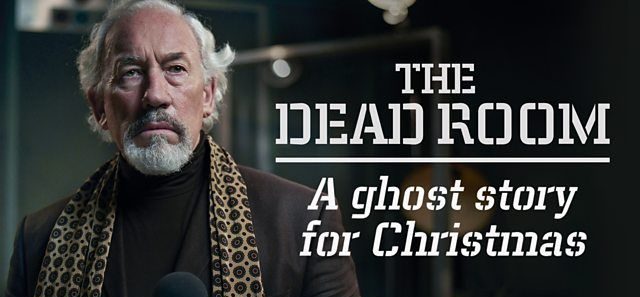The Dead Room review
It’s not often that I watch BBC4, but I make sure to tune in every year on Christmas Eve for a night of ghost stories. Since Dickens, hauntings and spectres have been a Christmas staple, and there seems something incredibly fitting about knuckling down and enjoying a bit of fright. This year, Mark Gatiss has written a new ghost story for the channel – The Dead Room is a wonderful homage to the classic ghost story, powered by a fantastic performance by Simon Callow, if not necessarily by its scares.
Aubrey Judd (Callow) is a veteran actor and the presenter of radio’s traditional The Dead Room, a ghost story for Christmas. This year sees the final broadcast before the studio is put out of commission, and Judd finds his memories of the past stirring. Initially, it seems to young producer Tara (Anjii Mohindra) that Judd may just be a pompous and self-obsessed thespian but, as the recording progresses, it seems there may be something supernatural going on, and the actor’s own nightmares may be returning.
Misdirection is one thing, but misdirection to pad out the run time feels a bit lazy
This is really Callow’s show, and he is really compelling throughout. He works on numerous levels in the show; his voice is exactly the right kind of deep and resonating that is perfect for the telling of ghost stories, and you can quite imagine him in that role (BBC, if you’re reading this, that may be something to pursue). As paranormal events begin to occur, he sells the muddled confusion of someone who both does and doesn’t believe what’s happening. The show runs at a tight half-hour but Callow throws himself in, making sure not a moment of his screen time wasted.
I think that the highlight of the show is a conversation between Judd and Tara about the rules of ghost stories and how they were better in the past – it is interesting and well-acted, and arguably the tensest scene in The Dead Room (it builds and chills in a way that some of the more obvious scary bits just don’t). However, it feels like some of the earlier sections are a bit padded out – we don’t really reach the main crux of the story until about halfway in, so the first half of the show is filled with suggestions (that Judd was involved with his predecessor’s death, that the silent sound artist in the studio has something to hide, that there’s a ghostly nun-like figure on the premises) that all comes to nothing. Misdirection is one thing, but misdirection to pad out the run time feels a bit lazy.
I think it would be fairest to describe The Dead Room as competently done, and I think that’s a description that also indicates its key fault: it’s not particularly scary
The Dead Room is worth a watch, and so I’m not going to ruin it for you by revealing the true nature of what’s going on at the studio. I’ll offer you a hint – Judd’s suggestions that everything was better in the past is something that returns to bite him, and that’s really where you’ll find the heart of this story. It’s all well and good harking back to something, but romanticising it is not always advisable. There’s more than just a literal ghost that appears in the studio – the final reveal of this is a satisfying one, but perhaps a bit more groundwork would have been beneficial.
I think it would be fairest to describe The Dead Room as competently done, and I think that’s a description that also indicates its key fault: it’s not particularly scary, and it feels at times as though Gatiss is more interested in showing off that he enjoys ghost stories himself. There’s nothing technically wrong with the show (aside from a lame jump scare and some really ropey CGI at the end that was probably below the standard the show was aiming for), but there’s nothing particularly impressive about it either. It’s a somewhat creepy watch, but it’s not likely to stay with you when it’s done.

Comments
Comments are closed here.